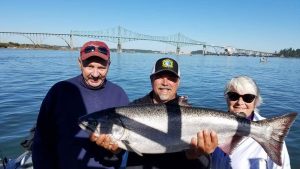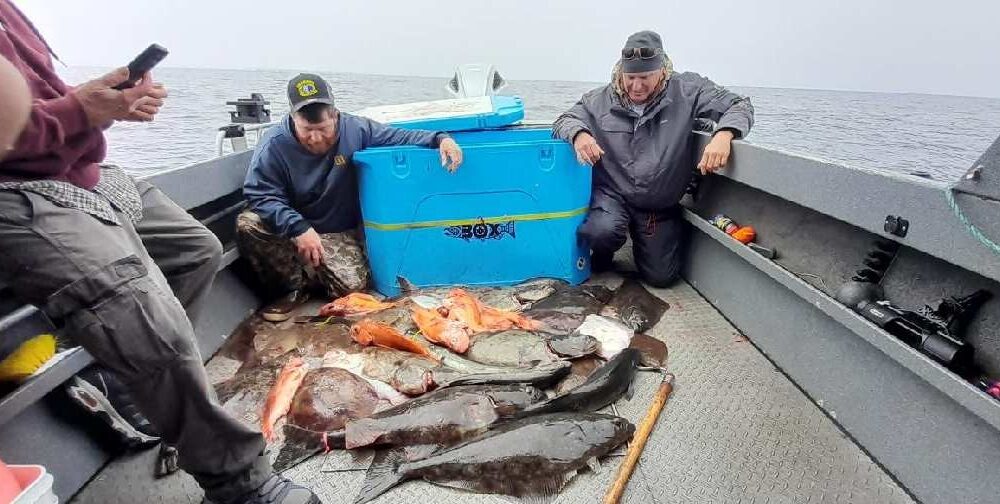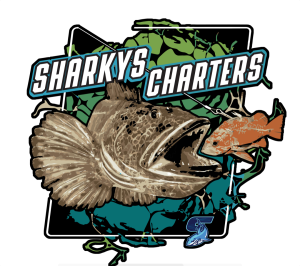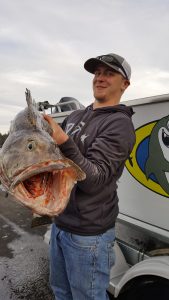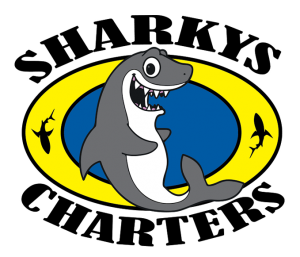Its been a long, wet, and cold winter here in Southern Oregon. I have had enough of it and am ready for Spring. The days are getting longer, and I want to be outside without a raincoat! If you want to talk salmon predictions than a discussion on El Nino/La Nina must happen, and is the basis of my prediction for this season and the future of salmon. Its official according to the scientists at NOAA that in the Pacific Northwest we are in a La Nina phase this winter for the first time in many years. Its been 5 months in a row now that the average seas surface temperature in the Southern Pacific Ocean has been at least .5 degree below average. When this decrease in temperature occurs the National Weather Service can declare it an official La Nina winter. Yeh! To many of us this isn’t a surprise considering how high the power bills have been! What weather is expected this spring and summer is what I want to know. After doing a bit more research at NOAA Weather, and reading the blogs, I am able to summarize to you that this time of the year forecast models for El Nino/La Nina are not very reliable. However, it seems that forecast models are predicting a weak El Nino to develop or a near neutral phase for the average ocean temperatures this spring and summer.
When it comes to fishing in general, I am a hopeless optimist and the current El Nino/La Nina neutral forecast I find a relief. I like tuna fishing and warmer El Nino ocean temperatures bring tuna close to shore. This season expect to see hard temperature breaks offshore 20-40 miles, and cooler average temperatures near shore. Its a relief to see that El Nino wont likely develop into a strong event this season which in general is harmful to growing salmon and groundfish species that prefer cooler nutrient rich waters and the plankton that thrive in it. This winter has seen more snow on the west coast mountain ranges then in previous years and thus many rivers have flooded or been sustained high on average. For me this is a sign of good things that may be coming for salmon and steelhead in 3 to 4 years. This winter is the beginning of a positive cycle for our salmon populations on the west coast and should be celebrated. As I sit here in my office at Sharky’s Charters, watching the rain come down in buckets, my thoughts drift towards the ocean and the possibility that chinook salmon are hunting the nearshore reefs searching for a meal. Its spring after all and the traditional kick off to King Salmon season. I don’t think that I am alone in my thoughts of twirling flashers and gold plated salmon spoons. Sport ocean chinook salmon season just opened on March 15, and while they are quite safe from me and my brethren on this blustery day it wont be long until the wind dies down and we head out to search for them. So what’s out there according to scientists?
As I mentioned earlier I am a hopeless optimist, but reality hit hard when I started reading Preseason Report I, just released in March. This preseason forecast, is in essence the best guess on the current numbers of salmon swimming off the west coast. The guess is supported by lots of math and statistics, and is usually pretty close in predicting the salmon populations. Preseason Report I is issued by the Pacific Fisheries Management Council to aid in the setting of the salmon fishing season, and to insure that to much fishing pressure is exerted on salmon populations by sport and commercial fisherman. After reading the document I can tell you this chinook season is going to be a lot like last season for the sport fisherman.Drought, El Nino, and the poor conditions for salmon that accompany them have taken a high toll on the southern and mid coast stocks of chinook and Coho salmon that Oregonians and Californians love to fish. Not many salmon in the ocean, but just enough to let us fish for them in most of Oregon’s coastal waters. The Sacramento River stocks, which drive most of the fishery off the coast of Oregon, are in only fair shape and small shadow of their former population. They however wont restrict our sport ocean fishery.The fact is that if sport fisherman were better at catching the chinook it would have restricted us also but the gear we use has a hard time fishing the depths that most chinook cruise in during the summer. The sad news is that the Klamath River, another huge contributor to our chinook fishery, is likely going to experience the worst return of chinook in recorded history. What a sad day it is for me to have to bring this news to my fellow anglers. It had better be a real eye-opener for the water managers and politicians that control the water and dams on the Klamath. This will likely result in complete closure of the commercial season in Oregon south of Florence. It will also likely result in a very small opening for ocean chinook off Brookings and Gold Beach in the summer months.
Our local river and bays will experience similar low chinook returns that we saw last season. There will be some good fishing in early September but it will diminish quickly as the fish move into tidewater. Keeping track of there movement in the bay and tidewater will really be key to having more success in this down season. . According to ODFW there were lots of chinook jacks in Coos Bay in 2016.Expect many three year old fish and fewer four year olds.
Coho salmon population predictions are similar to last year and thus we should see a season structure similar. I expect no Coho salmon fisheries in Oregon bays, but a limited ocean season beginning in late June for marked fish, and then a late season for unmarked fish in September.
Not the rosy forecast I was hoping to give you but its the truth and that’s what I report. So before you go and put your ocean salmon gear away for the season or put it for sale cheep on Craigslist, I would like to leave you with this thought. While there may not be easy pickings for salmon up and down the coast I will predict that a lucky port will see the majority of the salmon. It was my home port Coos Bay that saw this phenomenon about four years ago and Newport’s fleet saw this last year. The fish will be in the best ocean conditions where the bait is, and if that happens to be in your port you will be in for a great season of ocean salmon fishing. Keep an eye on the SST and the Chlorophyll charts. The cooler nearshore water temperatures will get the fish feeding closer to the surface and thus in range of our lighter sport gear. The only way to find out if the salmon are on your near shore reefs this spring is to get out and give it a troll! See you out there I hope, and if your looking for an ocean charter for salmon give me a call at (541) 260-9110.
